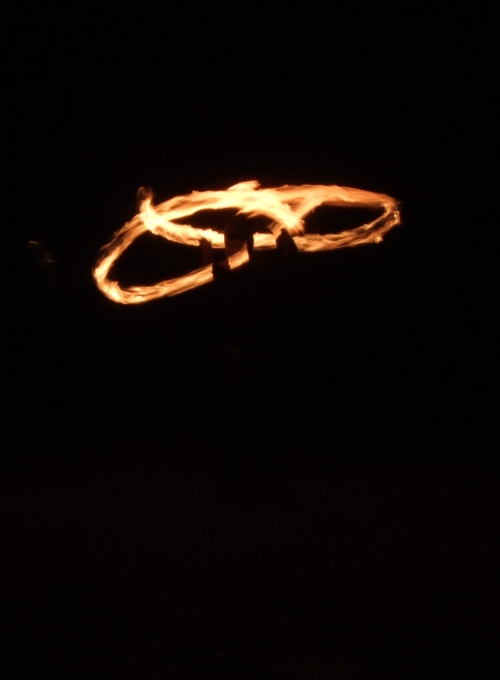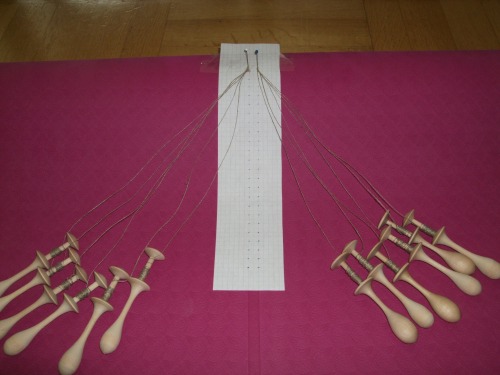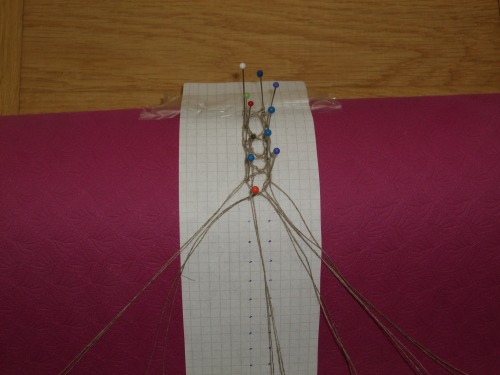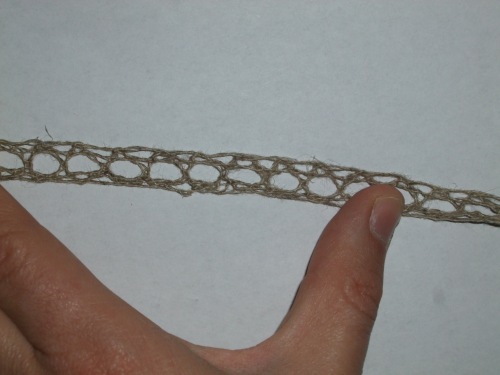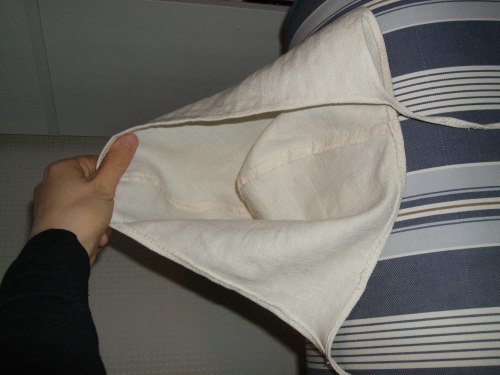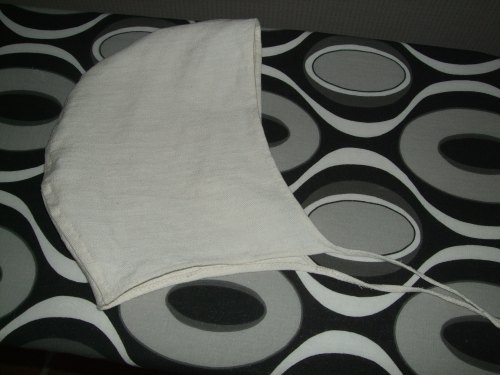The stashbusting challenge of The Historical Sew Monthly was for me a chance to sew a coat or a kaftan that has been waiting to be since 2008. I actually bought the fabric with a different coat in mind, in the style of late 15th century, but that coat would require much more fabric, so a couple of years back, I changed the idea into a Viking style kaftan. My stash and the beginning of the sewing process is described and depictured in this post.
Whenever you tread onto the road of Viking garments, you realize that there is not much to go on in the area of primary sources. To be honest, I’d like to replace the term ”historically accurate” with the term ”historically plausible” when it comes to recreating Viking Age garments. I don’t deny that there’s a lot of knowledge even in the small pieces of disintegrating cloth that has been found. I’m an archaeologist, and small leftovers from the bountiful artefacts that once was is usually all we have to go on, and especially if you also know the craft that made the pieces you’re studying, you can tell loads from small pieces! But when those damaged, small pieces of cloth is reconstructed into whole outfits, with the help of how buttons, brooches and other ornaments are placed in excavated graves, and sometimes, if you’re in luck, with period depictions of humans/deities, then a lot of conjecture will naturally come into play. There is absolutely nothing wrong with this, since the alternatives are to either ignore the archaeology and other sources altogether, or not to re-enact at all and ignore the practical knowledge base from experiments and re-enactments. Neither of which is a scenario I’d like to see. I just think that in these circumstances, the words ”accurate” or ”correct” give a false impression of absolute truth, and can we please just call the same thing ”plausible” instead! Or to put it in other words, this rant is my personal pet peeve about the words we use, not the actual actions behind them, since everyone I’ve come across who has discussed the level of accuracy in historical re-enactments are perfectly aware of – and always state – the fact that 100% accuracy can never be obtained. So again, I campaign for the word plausible!
Sorry about that little rant. Let me show you some pictures instead!
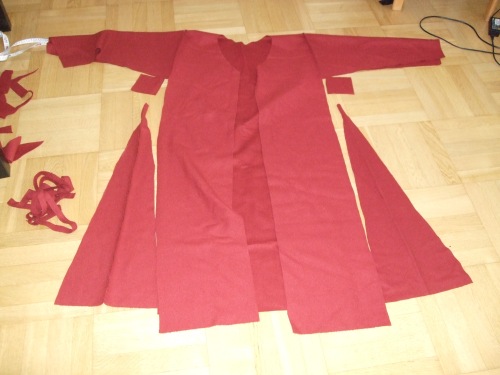
Layout of the whole kaftan
I based the pattern on the simple ”geometrical figures pattern” for clothes. It’s very similar to the diagram presented in Skogsduva’s blog post. I didn’t do it exactly after this diagram though, but made some changes. I did not divide the front and the back piece, making it one long continious piece. The sleeves were made by one measurement on top and one for the wrist, making them shaped by those means rather than that described in the blog post. Also I didn’t do a gore for the back, but only for the sides. The reason for this is simple: I wanted to save fabric. Fabrics were expensive, and if you weren’t making an even number of kaftans from the same fabric, you would get unnecessary fabric waste from three gores, as you get two triangular gores from a rectangular piece of fabric. On the other hand, the same logic might have caused a fashion to show off your wealth by your clothes, and take care to add that back gore…
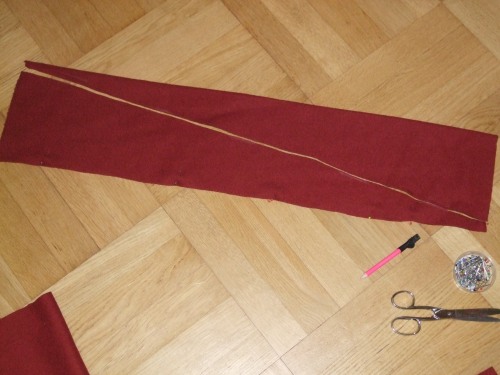
Two gores from one rectangle
So how does the whole thing look then? Well, it won’t be entirely ready until the Accessorize challenge in July, but here’s how it looks midway through.

The classic image of this blog, a garment hanging on a door…
If you look closely at the hem, you can see that it’s rather wonky. The lowest hem is folded double, which was unnecessary with this thick fabric, so I will pick it up and (hopefully) make it better before I’ll consider myself completely done with the sewing.
The kaftan is perhaps more of re-enactment fashion than a part of a Viking woman’s warderobe. The evidence for the male kaftan in the Viking Age is a little bit more supported by the source material such as depictions, but the female kaftan is pretty much guesswork. The kaftans on Vikings were probably also a fashion connected to the eastern Viking routes, so it’s perhaps more probable in places like Birka, where there are many eastern influences in the material. Here is one page I found about re-enactment kaftans, and the different interpretations that can be made. The idea that women only wore a shawl fastened by a brooch is however in my view made by someone who never spent a few months in the Scandinavian winter… The shawl may very well have been the outermost garment, but the snow and rains of the Scandinavian winters would, in my opinion, have meant that there was need for a fairly waterproof and warm outer coat, perhaps made by vadmal, for both sexes… As a side note, if I remember correctly from environmental archaeology studies, the Bronze Age Scandinavia was warmer than present day, but during the Iron Age the climate got cooler, and the Viking Age is the last part of the Iron Age here in Scandinavia, so the winters would have been rather cold. Another, less serious side note is that when I was a young teenager living in Northern Sweden, you did not wear a hat until it was below minus 15 degrees celcius. This fashion was however disregarded when I got older and wiser, and less concerned about admitting that I was cold… So perhaps it was the same thing with the shawl vs. the coat/kaftan…? 😉
The Challenge: Stashbusting (it was due March 31st, I’m so behind on the documentation!)
Fabric: Dark madder red wool. In stash for 7 years, which makes me feel a bit better about the 2 months delay of the blog post!
Pattern: Rectangles, rectangles made into triangles, and squares.
Year: Broadly aimed towards the 8th-11th century CE
Notions: Linen thread, bee’s wax
How historically accurate is it? Not a clue. Perhaps more of re-enactment fashion, however it’s historically possible (or even plausible) in fabric (madder was imported early, and there are native plant roots that also give a red colour) and pattern. It’s also hand sewn, but I don’t think my skill of hand sewing matches the skills of a woman my age in that time…
Hours to complete: More than I’d like to admit… (I didn’t keep count, but it felt like ages…)
First worn: Not yet. It’s not completely finished yet either…
Total cost: I don’t remember. Does 7 years in stash make it free? 😉
